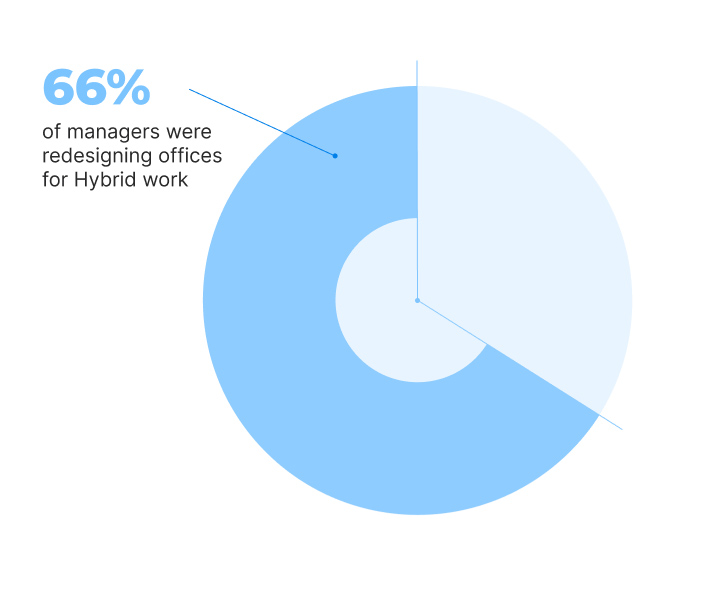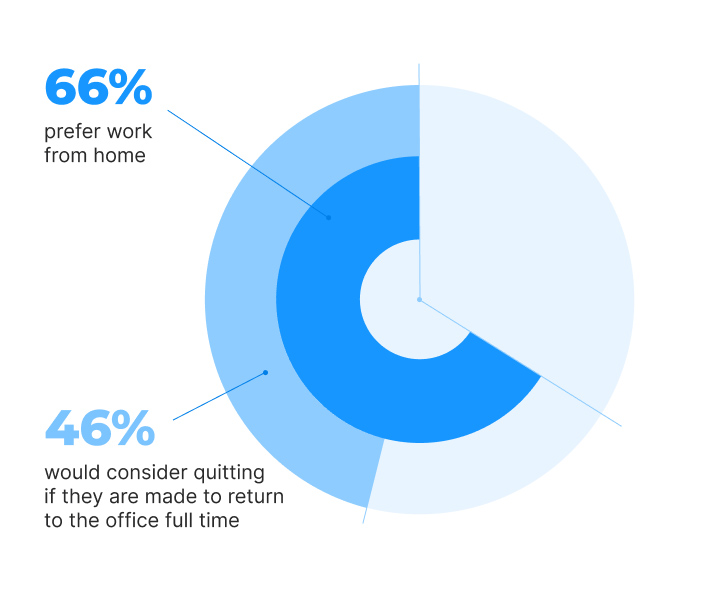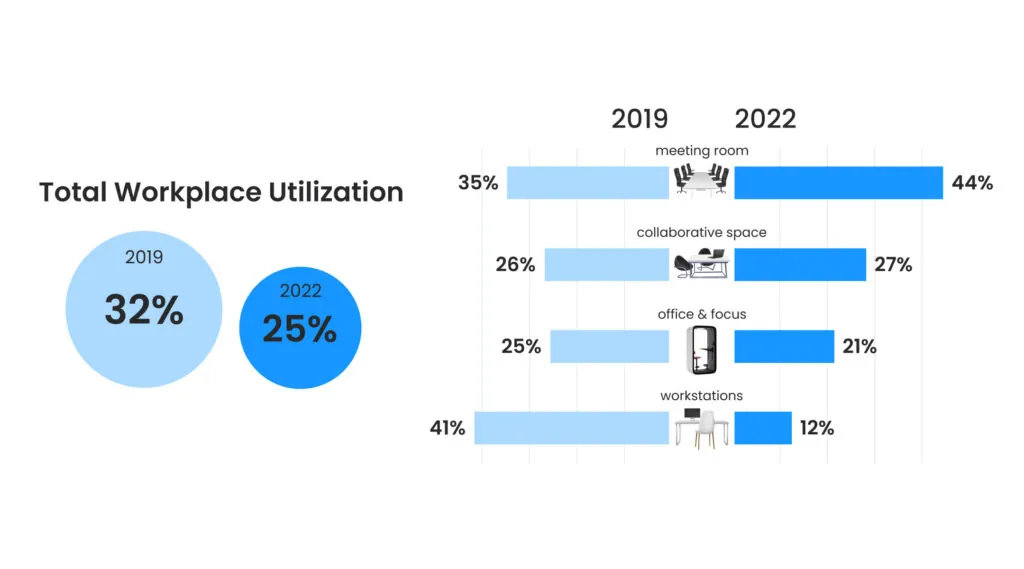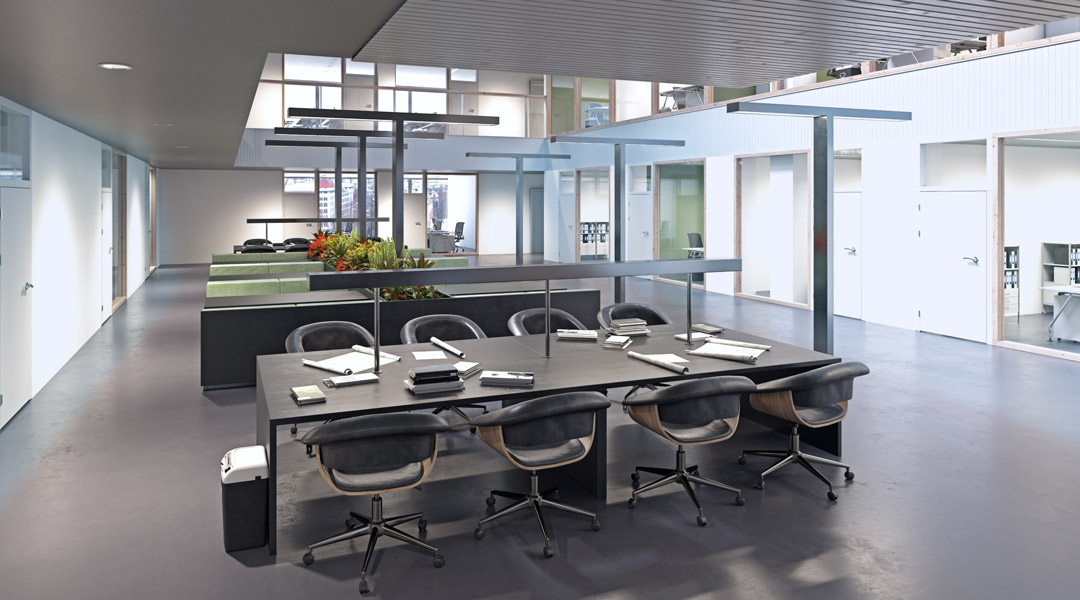
A Hybrid Office for Everyone
When the Covid-19 pandemic spread to the mainland United States in March of 2020, unbeknownst to the public, a huge scale experiment in altering the layout of the American business culture was about to begin. With nationwide quarantine orders in effect, businesses spent billions investing in Work From Home infrastructure—including things like altered scheduling, teleconference, and collaboration software, updated sick leave policies. Now, almost two years later and with the advent of readily available vaccinations, workers and managers are embracing what a March 2021 Microsoft report called “the future of work”: the Hybrid Office.
What Is a Hybrid Office?
Put simply, many American workers prefer working from home. With savings in transportation and other costs associated with a daily commute, an increased work life balance, and the added safety for those with compromised health, WFH has served many workers well over the past two years. Aside from worker satisfaction, some studies even suggest that WFH raises productivity when compared to traditional office work alone—even by as much as 13%.
However, there are still benefits to working regular hours in a traditional office. Some workers prefer the streamlined workflow of communicating face-to-face, as well as a familiar sense of work/life separation. Offices are still crucial as a meeting place for employees to communicate effectively and build trust in each other’s abilities, as well as use any specialty or secure equipment in a controlled environment. As such, many companies began drafting Return to Office orders not long after the first vaccinations became available.
A Hybrid office is used to bridge the gap between the benefits of WFH and RTO, employing flexible scheduling, teleconference software, elevated cleaning and air filtration techniques, and a few advanced management techniques. In a Hybrid office, for example, a worker may only work from home every other day and come to office only three days a week to handle meetings or report to supervisors, while handling their day-to-day office work from the comfort of their homes.
What Does Hybrid Working Mean?
Hybrid working depends on creatively managing different schedules and data points around an office. Hybrid working is most successful when managers can balance employee satisfaction with face-to-face interaction to build a corporate work culture. Some of the biggest challenges include finding the appropriate office size for fluctuating numbers of workers, offering compelling reasons to come to the office, and investing in the right kind of tools to manage off-site collaboration as well as in-house workflow. Today, more than ever, there are new safety and health protocols put in place to ensure workers have the best chance to stay healthy and at peak productivity when they’re in the office.
The right balance of time spent in the office may take some fine-tuning. For example, some companies opt for a block structure—one week in-office and one week out, for example—which might better accommodate remote workers with a long commute. Or others might employ a staggered schedule of WFH every other day, allowing for better contact tracing and social distancing. Managers who can find the right balance for a hybrid workplace will be rewarded with higher employee satisfaction, lower turnover rate, optimized corporate real estate costs, and increased productivity.
Why Invest in a Hybrid Office?
Companies including Microsoft, Apple, Adobe, and Google have all adopted some form of hybrid work model for their workforce, counting on an increase in productivity and savings in large office spaces required to house all their employees at once. The same Microsoft workplace study found that 66% percent of managers were redesigning their offices for Hybrid work—and with good reason. With a similar majority of 66% of workers preferring work from home, 46% of workers who responded said they would start looking for new jobs if their company did not offer a kind of Hybrid schedule.

Managers Redesigning Their Offices For Hybrid Work

The Willingness of Workers to Return to the Office
Hybrid offices were great ideas pre-pandemic but are essential tools as our new health reality continues. They serve a unique need for a workforce that has grown to prioritize a work/life balance above all else. Hybrid work models are also attractive to remote workers, meaning companies can capitalize on talented workers regardless of physical distance—and contribute to a more diverse workplace. And while the benefits are part of a futuristic approach to scheduling, Hybrid work might require some future forward technologies to properly accommodate the whole staff on any given day.
How to Manage a Hybrid Office?
Hybrid offices have a rotating schedule of workers coming and going throughout the work week. The trick to optimizing for CRE costs and productivity is determining how big of a space your company needs to hold enough individuals at a time to remain cost effective, without overspending on too much space. Technologies like PIR Occupancy Sensors help organizations monitor occupancy of a space while still working to protect employee privacy.
Desk occupancy sensors, for example, register when a space is in use, but don’t record any identifying information about the person using it. Other devices like People Counters can anonymously register the exact number of people in a room in real-time, while, again, using no images or other data that could be used to identify the occupants. With enough sensors over time, managers can collect anonymous data about how the office space is used, and if there are “dead spots” or unused space—which can translate to wasted money.
Solutions like this can solve some of the bigger logistical issues for organizing a Hybrid office, but they can also apply to any space where new workplace behavior and activity is taking place: like scheduling staggered breaks to avoid too much foot traffic at certain times, finding empty workspaces or meeting rooms briefly, or providing detailed sanitization plans for a whole floor or building.
Hybrid work is a product of necessity in the face of a pandemic, but more and more companies around the world are beginning to view Hybrid scheduling as an opportunity to reshape the global business landscape in a way that benefits employees and managers alike. With a commitment to flexibility and the right tools to plan for your company’s specific needs, your business can join the future of work with a Hybrid office.
More posts you might like
-
2022 Benchmark Data. Who Is Measuring What?
Hello Friends, Who ended 2022 where you thought you would? Well, many of our customers did not and some ended the year finding themselves in the middle of surprising new trends. We’d like to share with you some of our 2022 sensor-based Utilization Benchmark Data. If you are curious about any of these key findings, […]
-
Right-Sizing your Portfolio with Peak Metrics
A new way of working is here to stay. What started as a pandemic-era necessity has rapidly become the norm in many industries, including many fortune 500 companies and global corporations. Studies have shown that 73% percent of employees say they need a better reason to go into the office than just company expectations. It’s […]
-
Top 8 Essential Office Space Utilization Metrics & Their Applications
One thing we know for sure is that the future is uncertain. Instead of being stuck in a daze of wonder, real estate professionals are grounding their planning processes in data. So long as they have data to guide them, they can plan for hybrid work environments that are bound to change over time. Fortune […]


